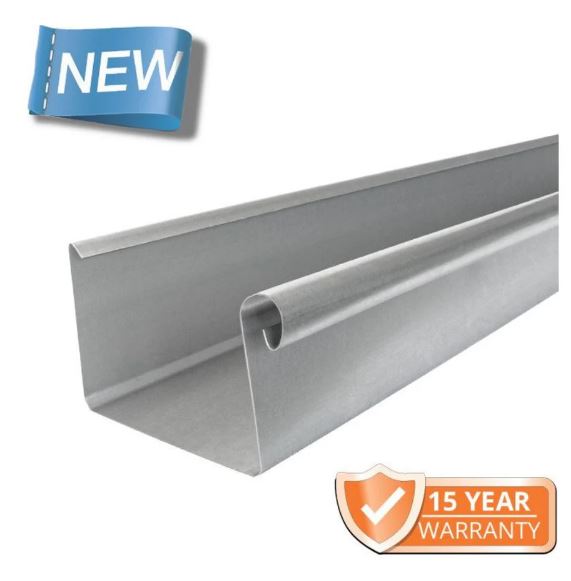When it comes to ensuring proper drainage and water management on roofs, understanding the differences between gutter systems is crucial for both roofing professionals and property owners.
One of the more specialized gutter systems is the box gutter, which plays a pivotal role in directing rainwater away from a building.
As hidden as these gutters might be, their effectiveness and durability can make a big difference in preventing roof damage or structural issues.
In this blog, we will explore what a box gutter is, how it differs from regular gutters, its materials, and why it might be the right choice for your project.
Let’s dive into the details of box gutters, from their design to their maintenance.
What is a Box Gutter?
A box gutter, often referred to as a trough, internal, or parallel gutter, is a concealed gutter system that sits between two parallel roof surfaces.
These gutters serve an essential function by collecting rainwater from both roof sections and directing it away from the building through downpipes.
Box gutters differ from valley gutters in that they are more structured and built within the roof's framework, making them invisible from the outside.
Unlike the more common eaves gutter, which is mounted along the roof edge, box gutters are an integral part of a building’s internal roofing design.
They are commonly used in commercial buildings but are increasingly being installed in modern residential properties for aesthetic purposes.
Key Features:
- Concealed within the roof's structure
- Positioned between two roof surfaces
- Drains water via downpipes or an overflow system
- Commonly used in commercial applications, with growing use in residential homes
Key Takeaway:
🔆 Box gutters are concealed gutter systems built within the roof's structure, ideal for directing rainwater from multiple surfaces. They are particularly effective for commercial and aesthetic residential applications.
Design and Structure of Box Gutters
Design is a crucial aspect of box gutters, as poor design can lead to water management problems, such as leaks or flooding.
A well-designed box gutter ensures seamless drainage, preventing water from pooling on the roof, which could lead to serious damage.
Box gutters are typically long, rectangular channels with flat bases and high sides, designed to fit between the building’s roofing framework.
They feature full-width outlets at both ends, which ensure proper water drainage through connected downpipes or sumps. Importantly, these gutters require sufficient slope or “fall” to direct the water flow toward the drainage outlets.
In modern buildings, box gutters are often favoured for their discreet appearance. They are hidden from view, providing a sleek and seamless exterior that complements modern architectural designs.
Design Elements of a Box Gutter:
- Flat base and rectangular shape: The flat base ensures that water flows evenly toward the outlets.
- Sufficient fall (slope): Box gutters must be designed with an adequate slope to ensure water does not accumulate.
- Outlets and sumps: Proper outlets help manage large volumes of water, especially during heavy rain.
- Overflow system: Essential for preventing water damage in extreme weather conditions or when the system is clogged.
Key Takeaway:
🔆 The design of a box gutter is key to its functionality, with proper outlets, slope, and an overflow system ensuring efficient water drainage. A poorly designed box gutter can lead to serious roof damage.
Materials Used in Box Gutters
Selecting the right material for a box gutter is essential to ensure long-lasting performance and durability. Given the exposure to water and weather elements, the materials used for box gutters must be corrosion-resistant and sturdy.
Materials for Box Gutters:
- Steel: Highly durable and corrosion-resistant, ideal for long-term use.
- Aluminium: Aluminium box guttering is versatile, available in multiple finishes, and resistant to weather damage.
- Lining Options: EPDM rubber, asphalt, metal, or roofing felt to provide additional protection against water damage.
Pros of Box Gutters:
- Hidden from view for a cleaner exterior look
- Durable materials offer longevity and minimal maintenance
- Suitable for high-volume water management
Cons of Box Gutters:
- Higher cost of installation and maintenance
- Requires precise design and installation for optimal performance
For cast iron downpipe solutions that work with both box and regular gutter systems, visit this link.
Why Choose a Box Gutter System?
There are several reasons why property owners and builders might opt for a box gutter system over a traditional eaves gutter.
One of the primary advantages is the concealed nature of box gutters, especially on commercial buildings, which allows for a seamless exterior that complements modern architectural designs.
Additionally, because they are built into the roof's structure, box gutters can handle larger volumes of water, making them ideal for commercial buildings or regions with high rainfall.
Reasons to Choose a Box Gutter System:
- Aesthetic appeal: Hidden within the structure, box gutters create a clean, unobtrusive finish.
- Good Flow Rate: Box gutters are capable of managing significant amounts of water, making them perfect for commercial applications or areas prone to heavy rain.
- Versatile design: Suitable for both commercial and residential properties, offering flexibility in design and application.
Maintenance and Cost Considerations
Like any gutter system, box gutters require regular maintenance to function effectively.
Given their concealed nature, it’s easy for property owners to overlook them, which can lead to clogs or even structural damage.
Regular inspections and cleanings are necessary to prevent blockages and ensure that water flows freely through the drainage system.
In terms of costs, while box gutters are more expensive to install than traditional gutters, their durability and long-term performance can make them a cost-effective choice in the long run.
Replacing damaged linings or making small repairs is often necessary, but with proper care, box gutters can last for decades.
Maintenance Tips for Box Gutters:
- Regularly inspect for debris, especially after heavy storms
- Clean gutters to prevent clogs and ensure proper water flow
- Check for leaks or water damage along the roof structure
- Replace damaged linings to prevent further deterioration
Conclusion
Box gutters offer an elegant and efficient solution for modern water drainage systems, especially for commercial buildings and aesthetically focused residential homes.
From their concealed design to their capacity for managing large volumes of water, these gutters provide both functional and aesthetic benefits.
Understanding the materials, design, and maintenance needs of box gutters will ensure their longevity and performance, protecting your property for years to come.

